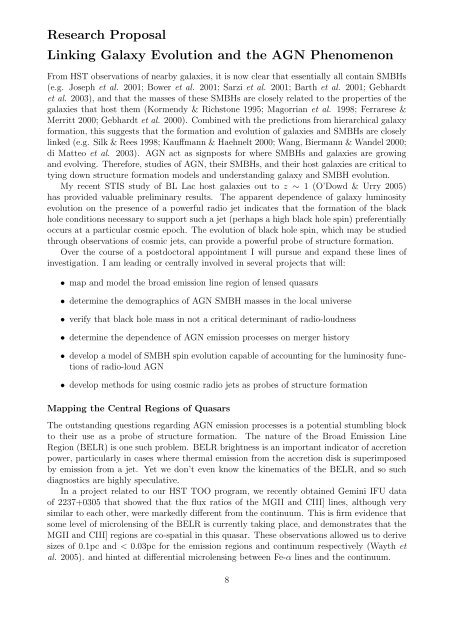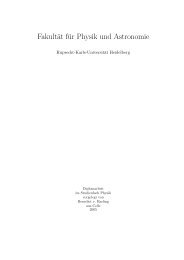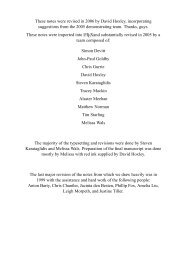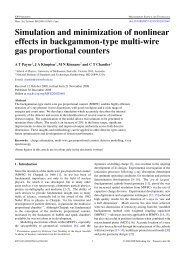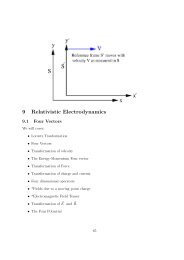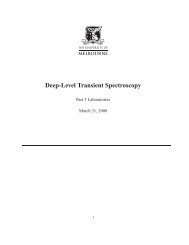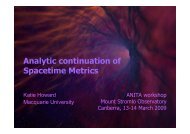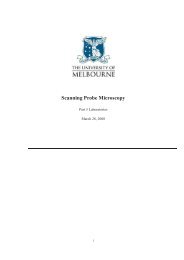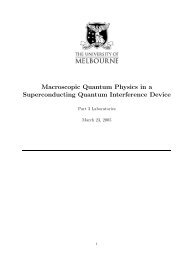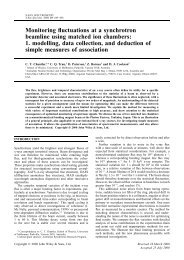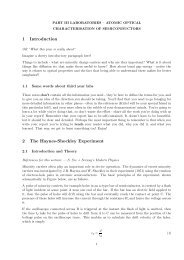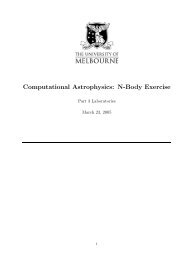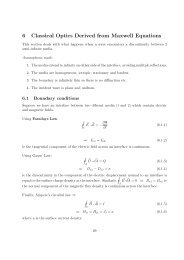Matthew John O'Dowd - School of Physics - University of Melbourne
Matthew John O'Dowd - School of Physics - University of Melbourne
Matthew John O'Dowd - School of Physics - University of Melbourne
You also want an ePaper? Increase the reach of your titles
YUMPU automatically turns print PDFs into web optimized ePapers that Google loves.
Research Proposal<br />
Linking Galaxy Evolution and the AGN Phenomenon<br />
From HST observations <strong>of</strong> nearby galaxies, it is now clear that essentially all contain SMBHs<br />
(e.g. Joseph et al. 2001; Bower et al. 2001; Sarzi et al. 2001; Barth et al. 2001; Gebhardt<br />
et al. 2003), and that the masses <strong>of</strong> these SMBHs are closely related to the properties <strong>of</strong> the<br />
galaxies that host them (Kormendy & Richstone 1995; Magorrian et al. 1998; Ferrarese &<br />
Merritt 2000; Gebhardt et al. 2000). Combined with the predictions from hierarchical galaxy<br />
formation, this suggests that the formation and evolution <strong>of</strong> galaxies and SMBHs are closely<br />
linked (e.g. Silk & Rees 1998; Kauffmann & Haehnelt 2000; Wang, Biermann & Wandel 2000;<br />
di Matteo et al. 2003). AGN act as signposts for where SMBHs and galaxies are growing<br />
and evolving. Therefore, studies <strong>of</strong> AGN, their SMBHs, and their host galaxies are critical to<br />
tying down structure formation models and understanding galaxy and SMBH evolution.<br />
My recent STIS study <strong>of</strong> BL Lac host galaxies out to z ∼ 1 (O’Dowd & Urry 2005)<br />
has provided valuable preliminary results. The apparent dependence <strong>of</strong> galaxy luminosity<br />
evolution on the presence <strong>of</strong> a powerful radio jet indicates that the formation <strong>of</strong> the black<br />
hole conditions necessary to support such a jet (perhaps a high black hole spin) preferentially<br />
occurs at a particular cosmic epoch. The evolution <strong>of</strong> black hole spin, which may be studied<br />
through observations <strong>of</strong> cosmic jets, can provide a powerful probe <strong>of</strong> structure formation.<br />
Over the course <strong>of</strong> a postdoctoral appointment I will pursue and expand these lines <strong>of</strong><br />
investigation. I am leading or centrally involved in several projects that will:<br />
• map and model the broad emission line region <strong>of</strong> lensed quasars<br />
• determine the demographics <strong>of</strong> AGN SMBH masses in the local universe<br />
• verify that black hole mass in not a critical determinant <strong>of</strong> radio-loudness<br />
• determine the dependence <strong>of</strong> AGN emission processes on merger history<br />
• develop a model <strong>of</strong> SMBH spin evolution capable <strong>of</strong> accounting for the luminosity functions<br />
<strong>of</strong> radio-loud AGN<br />
• develop methods for using cosmic radio jets as probes <strong>of</strong> structure formation<br />
Mapping the Central Regions <strong>of</strong> Quasars<br />
The outstanding questions regarding AGN emission processes is a potential stumbling block<br />
to their use as a probe <strong>of</strong> structure formation. The nature <strong>of</strong> the Broad Emission Line<br />
Region (BELR) is one such problem. BELR brightness is an important indicator <strong>of</strong> accretion<br />
power, particularly in cases where thermal emission from the accretion disk is superimposed<br />
by emission from a jet. Yet we don’t even know the kinematics <strong>of</strong> the BELR, and so such<br />
diagnostics are highly speculative.<br />
In a project related to our HST TOO program, we recently obtained Gemini IFU data<br />
<strong>of</strong> 2237+0305 that showed that the flux ratios <strong>of</strong> the MGII and CIII] lines, although very<br />
similar to each other, were markedly different from the continuum. This is firm evidence that<br />
some level <strong>of</strong> microlensing <strong>of</strong> the BELR is currently taking place, and demonstrates that the<br />
MGII and CIII] regions are co-spatial in this quasar. These observations allowed us to derive<br />
sizes <strong>of</strong> 0.1pc and < 0.03pc for the emission regions and continuum respectively (Wayth et<br />
al. 2005). and hinted at differential microlensing between Fe-α lines and the continuum.<br />
8


